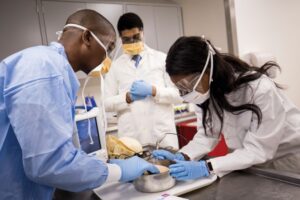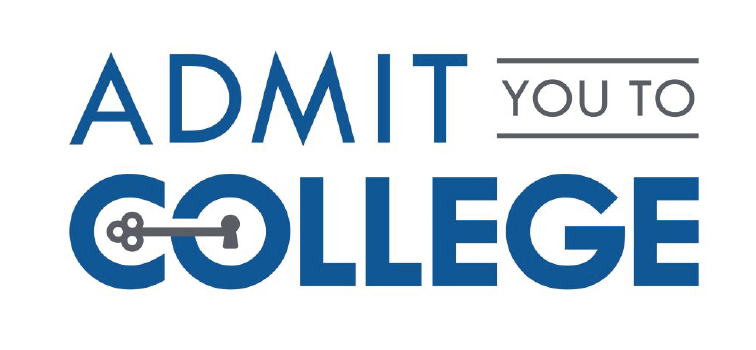
Medical doctors practice a highly rewarding and well-compensated profession. But to become a doctor, one must overcome formidable barriers that begin with admission to medical school, a highly competitive undertaking. Fortunately, there are steps that a student can take to improve their chances of admission.
Medical schools receive thousands of applications every year for a limited number of openings, so they take a holistic approach to their assessment of applicants. An applicant’s GPA, MCAT score, volunteer experiences, medical career exposure, extracurriculars, interview, and recommendations and are all in the mix. To make the strongest case for admission, applicants should find a way to distinguish themselves from their peers.
First Steps
Few colleges have a pre-med major. Instead, pre-med usually describes a path to medical school. Students on a premed path may choose any major provided they take the courses required by medical schools.
Before selecting a major, there’s an even more fundamental question for aspiring medical students — what type of institution offers the best foundation? The two principal alternatives are research universities and liberal arts colleges.
1. Research University or Liberal Arts College?
Research universities and liberal arts colleges both offer viable paths to medical school. Each type of institution has pro’s and con’s that appeal to different students.
Pro’s and Con’s of Research Universities:
Research universities focus on research projects conducted by professors and graduate students. Over half of advanced research in the U.S. is conducted by universities, which retain tenured professors with research experience to lead projects and publish academic articles to disseminate their findings. They don’t focus on undergraduate teaching, but they provide an excellent academic experience for students who are willing to seek out the resources they offer.
Pro’s:
Medicine, as a scientific field, is considered a STEM discipline. Because research universities concentrate most heavily on STEM, they have advantages for pre-med undergraduates. These often include state-of-the-art research facilities, faculty who are tops in their field, many internships and research projects, multiple specialties within each major, and affiliation with a teaching hospital.
Of these advantages, the most significant is teaching hospitals. Although the students taught in these hospitals are primarily those enrolled in the medical school, pre-med students can get involved in programs that provide them with experience to help them get admitted to med school.
Con’s:
There are also drawbacks to research universities. Among these are grade deflation, weeder courses, a focus on the needs of grad students, and the large number of students needing personal guidance from limited resources.
Grade deflation is a serious issue, so potential applicants to MIT, Princeton, Caltech, the University of California and other institutions should be wary. For example, policies at UCLA and Berkeley mandate that no more than 15-20% of grades can be A’s. This leads to a sharp difference between the average graduating GPA from these universities compared to others such as Harvard, Brown, and Stanford, which are known for grade inflation.
Many introductory science classes are designed to weed out struggling students in challenging majors. Weeders serve a research university’s purposes by providing an equitable basis for reducing the number of students matriculating in a high demand major. However, if a pre-med student is weeded out of a course required for med school, their progress could be blocked.
Pro’s and Con’s of Liberal Arts Colleges
A student can study liberal arts at a research university, but those who prefer a liberal arts education often opt for one of America’s small liberal arts colleges. The liberal arts consist of the natural sciences, social sciences, engineering, mathematics, arts, and humanities.
Graduates of liberal arts colleges have earned renown in STEM fields. For example, Amherst and Swarthmore are among the top ten undergraduate schools in the world in the number of Nobel laureates in the sciences, including medicine, per 10,000 graduates.
Pro’s
Most liberal arts colleges have fewer than 5,000 students, so they’re much smaller than research universities. This allows for smaller class sizes, lower faculty-to-student ratios, and closer relationships with faculty.
Introductory science courses at liberal arts colleges aren’t designed to weed out weak students. In fact, these colleges encourage STEM majors. Better faculty relationships often result in strong letters of recommendation, which are instrumental in med school admissions.
Due to the smaller number of students, liberal arts colleges usually have strong faculty advising programs. Faculty Pre-med Committees tend to be active, and they often guide students through the entire medical school application process.
Con’s
The teaching hospitals of research universities provide an effective means of enhancing a pre-med student’s medical experience. Although students may find opportunities to work at nearby unaffiliated hospitals, most liberal arts colleges do not offer the convenience of a teaching hospital. Research opportunities at liberal arts colleges are more limited in size and scope.
2. Selecting a Pre-Med Major
Choosing the best major for pre-med study should be based on a student’s preferences, goals, and aptitudes. However, since only 41% of applicants are admitted, many students seek any advantage that may arise from their field of study.
Data released by the Association of American of Medical Colleges (AAMC) in a recent year shows that of the 54,241 students who applied, 60% had majored in the Biological Sciences. The AAMC data on the 22,239 of these applicants who were admitted to medical schools shows that the categories of their majors were distributed as follows:
• Biological Sciences:12,845 (58%)
• Physical Sciences: 2,240 (10%)
• Social Sciences: 1,991 (9%)
• Humanities: 832 (4%)
• Specialized Health Sciences: 784 (3%)
• Mathematics: 156 (1%)
• Other: 3,391 (15%)
A relevant question is: “Which categories had the highest percentages of applicants admitted?” Below are admission rates by category. Humanities tops the list at 44%, followed by Physical Sciences at 42% and Mathematics at 40%. The lowest admissions rate was for Social Sciences at 1%. MCAT scores were ranked similarly by category.
• Humanities – 44%
• Physical Sciences – 42%
• Mathematics – 40%
• Biological Sciences – 36%
• Health Sciences – 35%
• Social Sciences – 34%
• Other majors – 33%
Correlation does not imply causation. Just because students with certain majors had higher admission rates doesn’t mean that this is attributable to their major. Even with this caveat, the fact that Humanities has the highest admission rate is surprising. There’s no obvious explanation, but it underscores the idea that students should consider majoring in a field that animates their passion.
The Physical Sciences are in second place, which makes sense. Many students now in med school report that courses in the Physical Sciences are the most beneficial because they cover material in the MCAT and the med school prerequisite courses.
Biological Sciences majors, the largest category in number of applicants, shows only an average med school admission rate and MCAT score.
Medical School Core Requirements
In selecting a major, students should compare the curricula of alternatives. To some, it makes more sense to take courses that are required by their major as well as by medical schools. Students in some majors may need to request additional electives in order to take all of the courses required by med schools.
The prerequisites for medical schools vary. Common requirements include:
• 1 year of English (grammar and writing)
• 1 year of Biology with lab
• 1 year of General Chemistry with lab
• 1 year of Organic Chemistry with lab
• 1 year of Physics with lab
Some med schools require more than the courses above. Since pre-med students don’t know the med schools to which they’ll be applying, they should also take the following:
• 1 year of Mathematics
• 1 year of Biochemistry
• 1 year of Psychology or Sociology
3. Skills Sought By Medical Schools
The AMA has endorsed 15 Core Competencies for Students Entering Medical School. Of these, there are 10 “soft” skills that pre-med students can purposely develop:
• Service orientation
• Social skills
• Cultural competence
• Teamwork
• Oral communication
• Ethical responsibility to self and others
• Reliability and dependability
• Resilience and adaptability
• Capacity for improvement
• Critical Thinking
Possessing these skills is only half the battle. Applicants should provide evidence of possessing them in their applications, letters of recommendation, and interviews. A common means of providing evidence is through volunteer work and community service. It is these types of experience that med schools weigh most favorably.
Volunteer work shows a medical school that the applicant is concerned with the general welfare and not just themselves. It indicates that an applicant has the kind of empathy that doctors must have in order to provide the highest quality of care.
*************
Admit You to College guides prospective pre-med students in setting a path to medical school before even applying to college. If you’re a parent who isn’t sure how to advise a student who’s set medical school as a goal, you should contact us.
